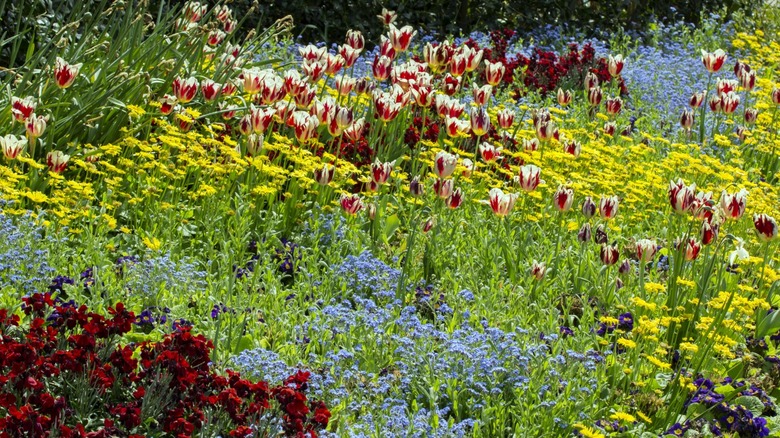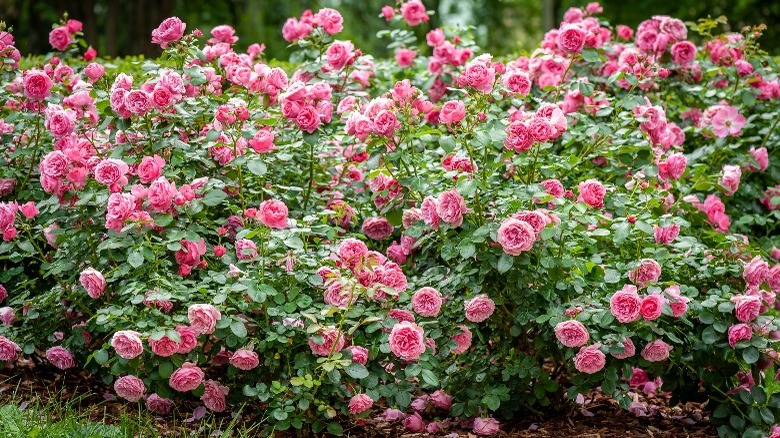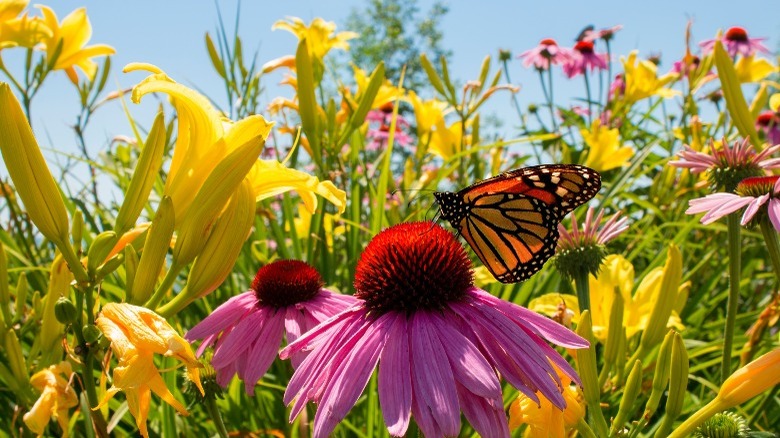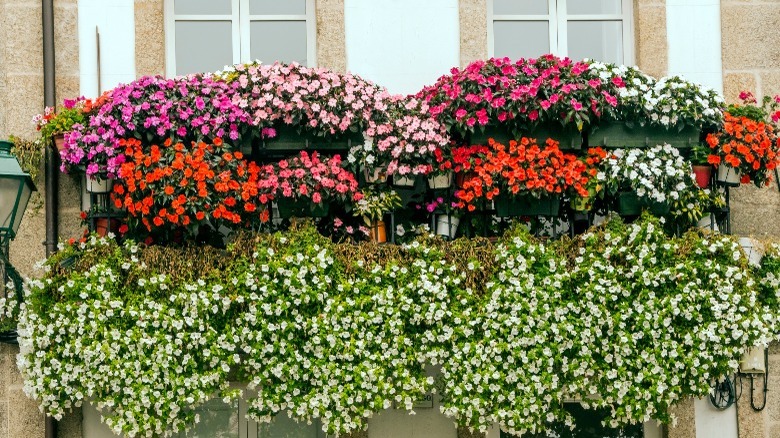What's The Difference? Annuals Vs. Perennials
Most plants are categorized as annuals or perennials, but if you're new to gardening, these may be unfamiliar terms. Luckily you've found this guide! Annuals have a life cycle that lasts only a single growing season, and typically die off once outdoor temperature drop below freezing. Perennials, on the other hand, have a growing cycle that lasts several years. They too fade when the weather grows cold, but are revived each spring after dormancy. Because perennials dedicate energy to maintaining their longevity, HGTV explains that they tend to have a shorter bloom period. Annuals, by comparison, produce vivid flowers for the entirety of the growing season, from spring until the frost arrives in autumn.
These are the main differences between annuals and perennials, but they have implications that make plants in each category better suited to certain uses and conditions. It should be noted that these are generalizations and there are in fact exceptions, but this guide can help you determine whether you should be using annual plants or perennials in your garden. Neither is truly better than the other, and together they can be used to create a beautiful display of various colors and textures.
What are the differences in cost?
In terms of upfront costs, perennials are generally more expensive than annuals, according to The Spruce. Perennials can be more difficult to successfully grow from seed than annuals, so gardeners typically purchase starter plants instead. While more convenient, it is also pricier than seed packets or starter annual plants, especially when considering the individual cost per plant. When comparing over a longer time period, however, you may be surprised to learn that perennials have several characteristics that offset the initial investment.
Perennials are defined by their ability to grow back year after year, which eliminates the need to buy replacement plants each spring. If you look ahead and consider the cost over multiple seasons, perennials could actually be a more economical choice. In addition, perennial plants can be easily propagated by dividing large plants into smaller sections, furthering your initial investment over just a few years. Once settled into their habitat, perennials also require less maintenance than annuals, increasing their relative value by saving you time and labor.
Are annuals safer than perennials?
In short, annuals are not safer than perennials. Both annual and perennial plants can be poisonous and cause harm if touched or ingested. According to Gardening Know How, there are a few visual markers that could indicate toxicity; bell-shaped plants, whiteish sap, glossy leaves, and unfamiliar berries are all characteristics to look out for and protect yourself against when dealing with an unfamiliar species.
Unfortunately, relying on this method alone is insufficient, as it can be difficult to determine certain traits, and there are no easy indicators that cover all plant species. Adding to the confusion, there are certain plants that are non-toxic to humans, but can be harmful to pets. The best way to keep yourself and your loved ones safe is to self-educate and maintain vigilance when enjoying the outdoors. There are a number of reputable resources either online or in print that detail the poisonous plants you may encounter in your geographic region.
Thankfully, there are many non-toxic species of both annuals and perennials that are safe for all to enjoy. If seeking perennials, try roses, bee balm, or nasturtiums. Some non-toxic annuals include snapdragons, zinnias, and impatiens, per Flowers and Farming.
When to choose perennials
Perennial plants are more commonly used for ground cover than shorter-lived annual plants, as their yearly recurrence helps build to a lush landscape that will continually improve. Perennial plants are also a better choice if you're aiming for large plants, as their growth is merely interrupted by the cold and can resume when temperatures rise in the spring. This strategy requires more patience and long-term planning, but to many gardeners it will be well worth the wait.
Perennials are also a great choice if you are interested in contributing to the greater local habitat. Perennial plants provide consistency from year to year that can help attract pollinators and other local wildlife, according to Garden Design. Many perennial plants can actually be found growing wild in areas to which they are native, and their ideal climate conditions will help them thrive in your garden as well. Once established, many perennials require less maintenance and fewer waterings than fussier annual plants. This is especially beneficial to gardeners working in drought-sensitive regions. Perennials can also protect areas sensitive to soil erosion, as their roots that continue to deepen and spread each year, help aerate the soil, and provide structure to hold it in place.
When to choose annuals
While the benefits of perennials may be more obvious, annuals have their own practical advantages. Because of their lower upfront costs, annuals are more appropriate for single season applications, such as filling window boxes or entry containers. Annuals may also be a better choice if you are in a short-term housing situation, where the long-term benefits of perennials would be lost. If you've just started gardening or moved to a new area, consider starting with annual plants to get a sense of the climate and soil conditions with less commitment and investment. Annuals are also great for gardeners who wish to experiment creatively or change schemes each year.
More than just decorative, annuals can also solve common problems. In the bustle of winter shifting the spring, gardening plans can easily fall to the wayside. According to Florgeous, there's no need to worry, as many types of annuals can be planted later in the spring and even into summer. Experienced gardeners know, however, that even planting on time can result in disappointments. If your planting is less successful than you originally anticipated, or you're simply yearning for more color, add annuals to fill in or liven things up mid-season.




